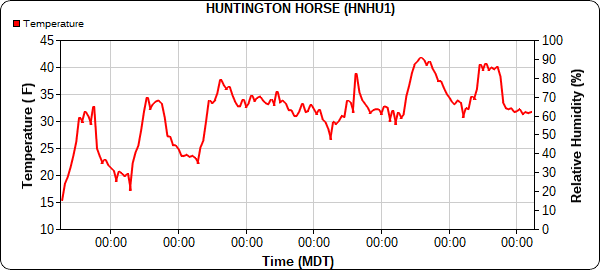Forecast for the Skyline Area Mountains

Issued by Brett Kobernik on
Saturday morning, April 6, 2019
Saturday morning, April 6, 2019
The avalanche danger will again be mostly LOW today but may rise to MODERATE with daytime heating. This will be more pronounced in the lower and mid elevations where the snowpack will be more wet. Avoid steep slopes when they become overly wet, sloppy and punchy.

Low
Moderate
Considerable
High
Extreme
Learn how to read the forecast here








